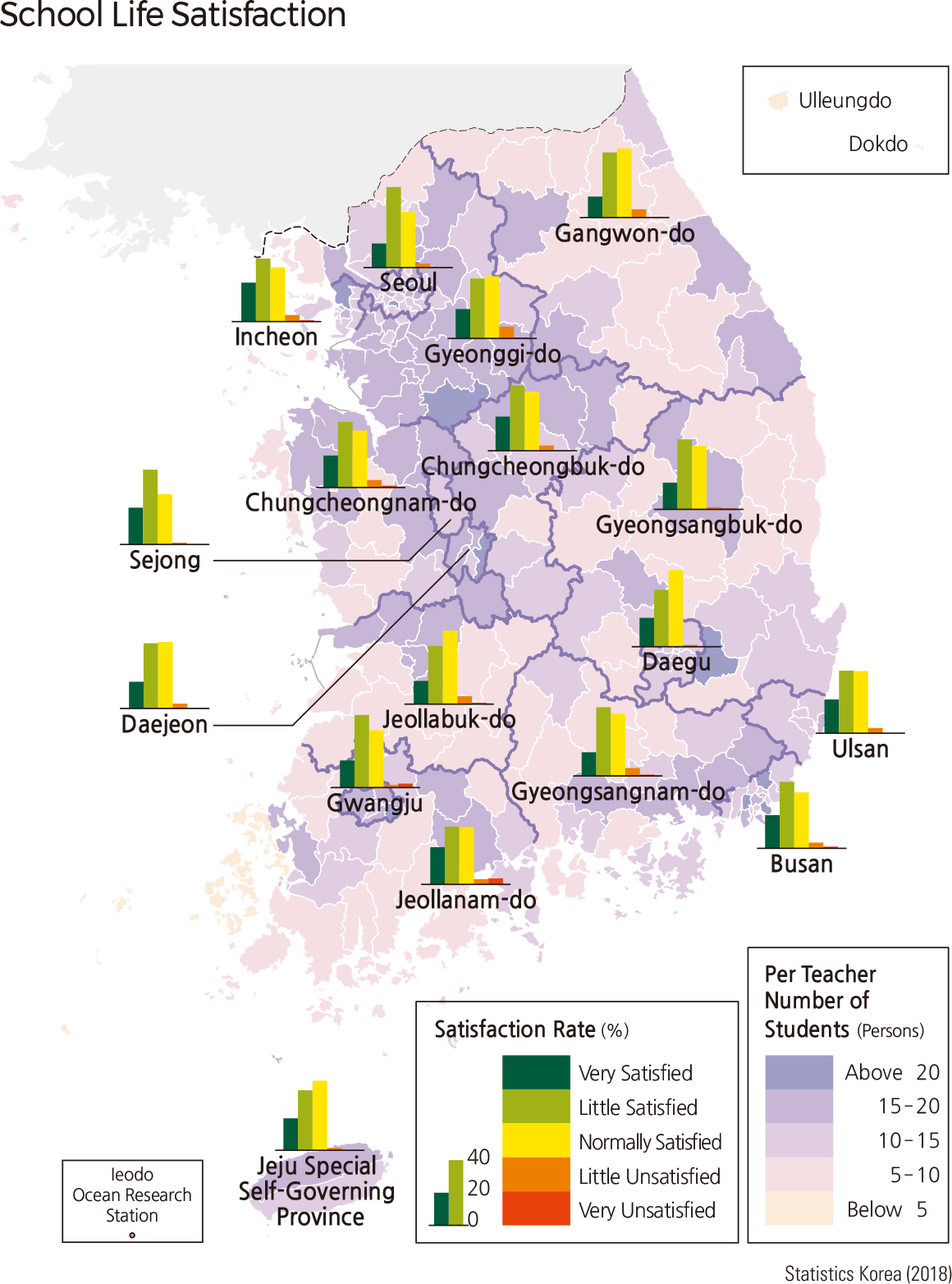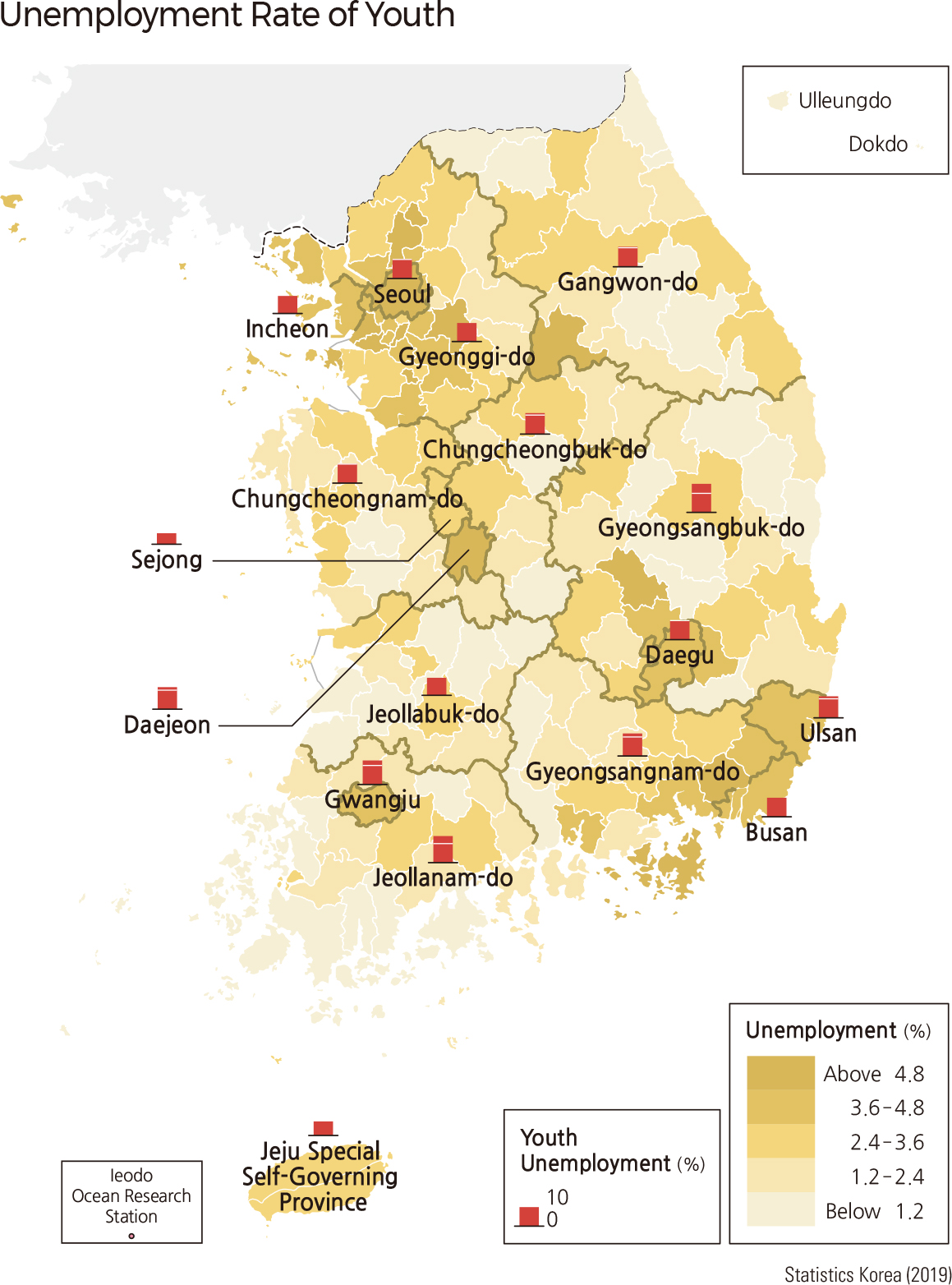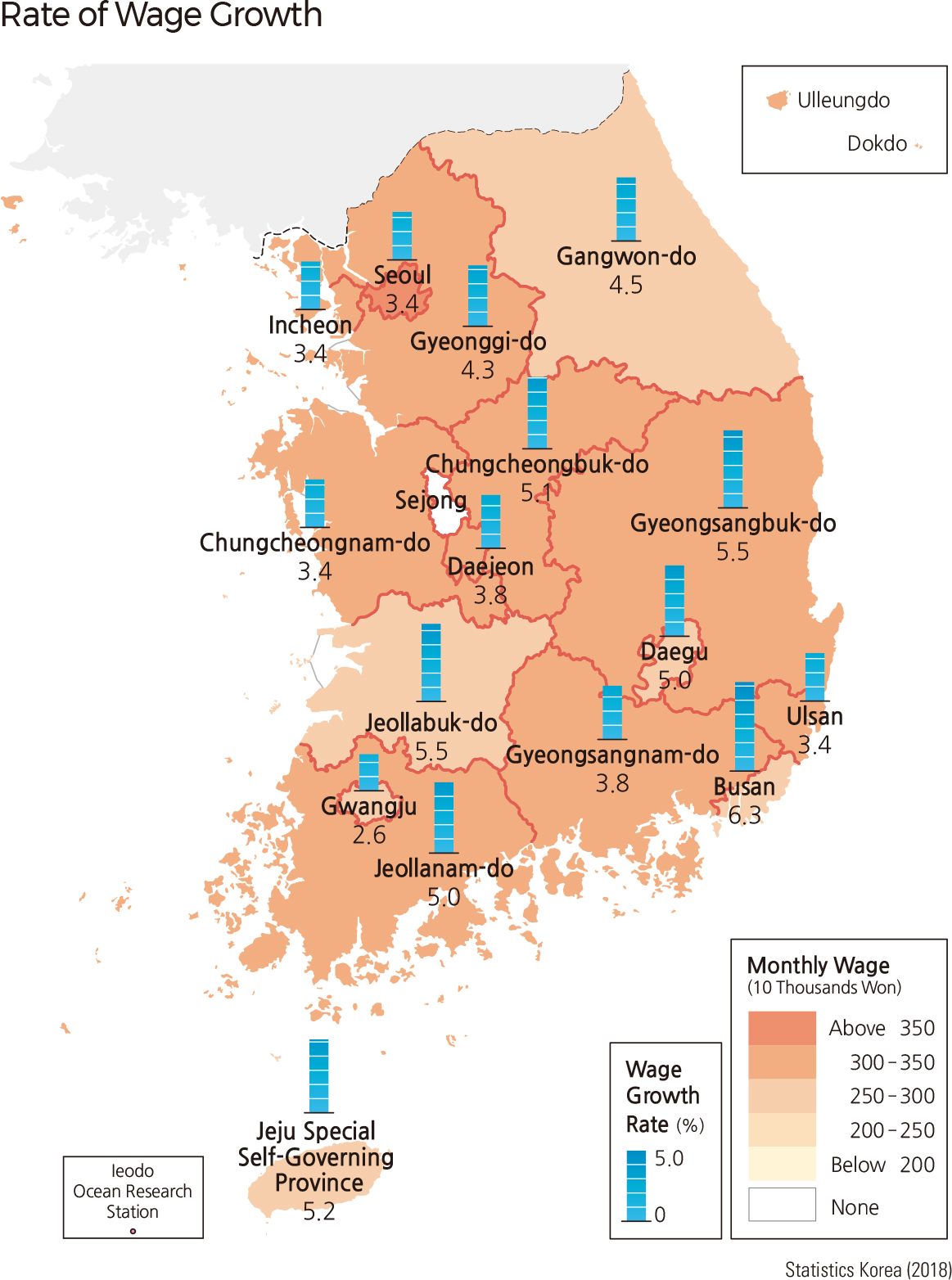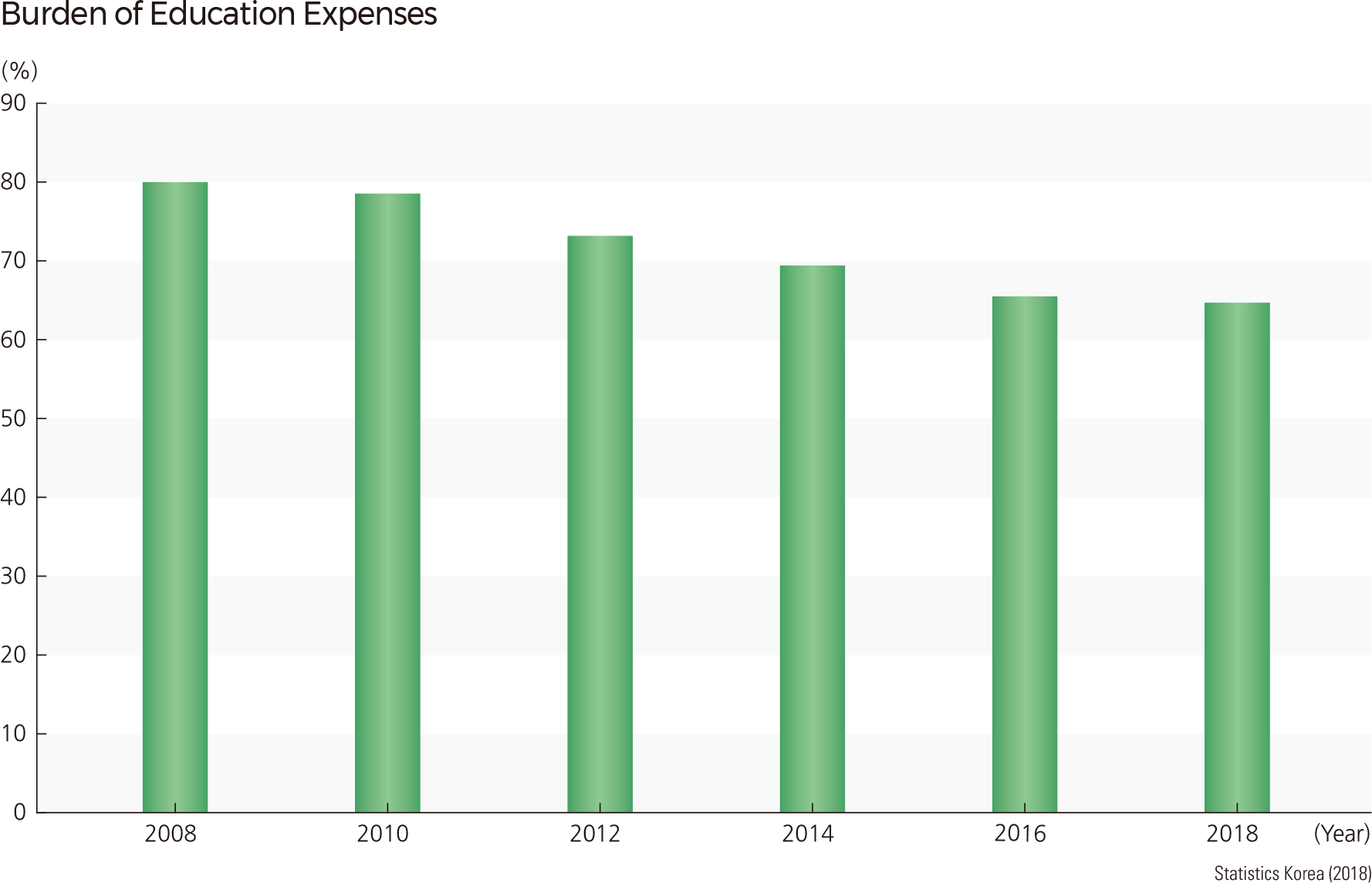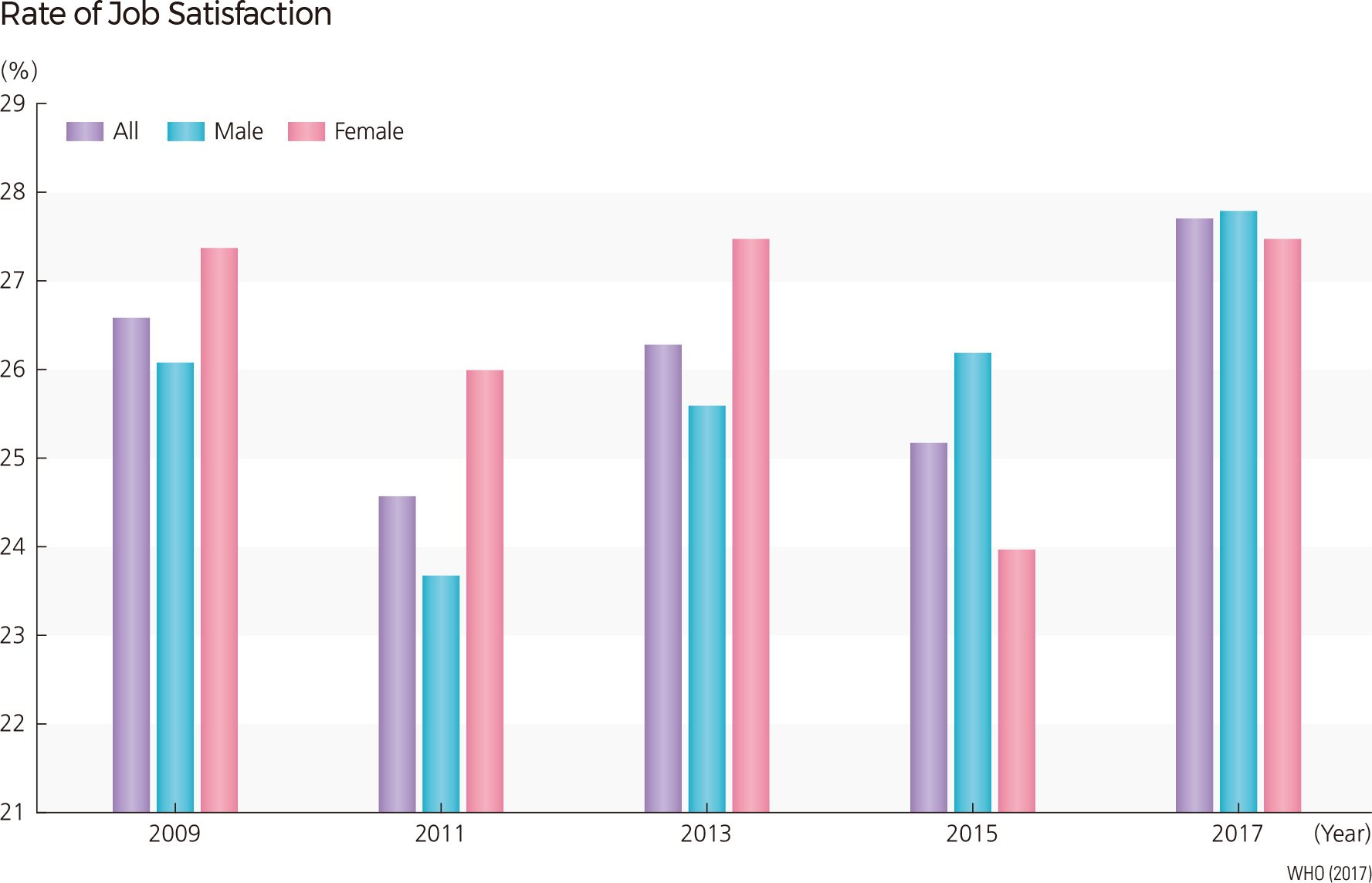English I 2019
Education is a process of not only acquiring and creating knowledge, but also determining the individual's quality of life through social stability and development. It also acts as a means of bridging the quality of life gap between individuals in society and realizing their potential. Education is measured in terms of the distribution of educational opportunities, mobilization of educational resources, and educational performance. The opportunity for economic activity, the appropriate compensation, and the quality of economic activity determine the quality of life of the individual through income. Therefore, the individual’s quality of life in the society where the guarantee of opportunities for economic activities exists and the appropriate compensation is made is evaluated as high.
Among the six indicators in the education sector in 2018, the burden of education expenses, school education effects, school life satisfaction, and tertiary education completion rates are improving, with the exception of the early childhood employment rate and college graduate employment rate. The distribution of school education effects was highest in Busan, Jeollanam-do, and Jeollabuk-do, while Ulsan was the lowest at 28.3% of respondents. Of the six indicators in the employment and wage category, except for the employment rate and the unemployment rate, the average monthly wage, low-wage workers, working hours, and job satisfaction tended to improve. The distribution of job satisfaction was highest in Sejong, Gangwon, and Jeju, while it was lowest in Busan at 22.7%.
|
